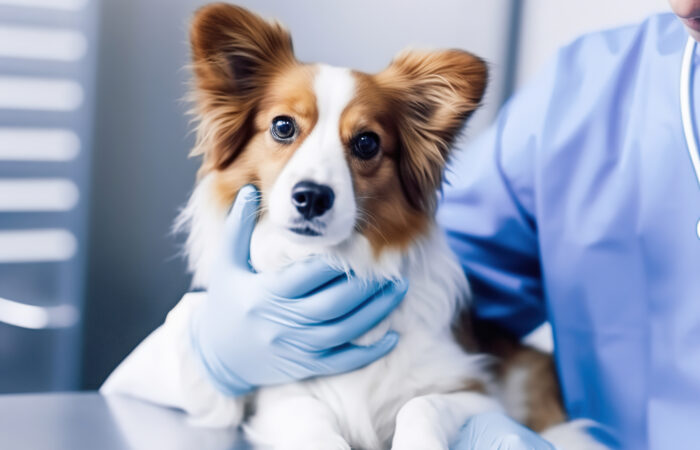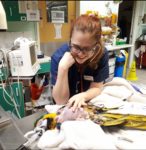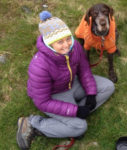Essential nursing skills for veterinary nurses & technicians
This course is an introductory approach to nursing skills, tips and tricks that experienced RVNs can share with you to support you as you transition into your new role or return to your veterinary career, following some time away from the profession.
This veterinary thought exchange online tutored course takes a different approach towards supporting both the newly qualified and those Registered Veterinary Nurses (RVNs) returning to practice. This course would also appropriate for anyone working in a support role within veterinary practice (Animal Care Assistants). This course has been carefully created to provide a completely holistic approach to CPD for RVNs. The course is also underpinned by a real-time discussion forum where you can ask any of your nursing questions while you are working your way through the lessons.
There are a variety of amazing speakers on this course from across the veterinary profession, including Carl Bradbrook (Zeropain Philosophy – Anaesthesia), Laura Jones (Nursing Clinics), Fiona Marjoram (Hills Pet Nutrition UK), Jon Hall (Bandaging & wounds), Ashley Wemple (ECC), Mairi Frame (Diagnostic Imaging), Hayley Walters (Pain recognition and management) Wendy Irvine (Exotics), Janette Bailey-Woods (Anaesthesia) and Scott Kilpatrick (Laboratory 101).
This course will take approximately 15 hours to complete and will provide you with a completion certificate for 17 hours CPD at the end of the course.
(Access to this course is for 12 months from the date that you sign up to the course).
Course Content
- The benefits of active triage
- How to effectively triage
- How to best educate and utilize every member of the team in the triage process
- Our responsibility and how to provide guidance within our role as RVN in emergency situations
- Identify common emergency cases
- How to identify and manage emergency cases from Part 1
- Importance of effective analgesia
- RECOVER guidelines and BLS
- How to stay calm during CPR
- Recognise the body language cats and dogs display when in pain
- Understand how to objectively give pain a score and when to give more analgesia
- Recognise the importance of multimodal analgesia and which drugs can be used
- Review the basics of anaesthesia and common drug combinations.
- Trouble shooting anaesthesia, let’s logically work-through what is happening, why it is happening and how to correct issues with our patients.
- Review common drug choice/ combinations and doses of anaesthetic drugs/agents.
- Learn the benefits of using pulse oximetry in your anaesthetized patients
- Understand what information the pulse oximeter is providing us with and how this affects our patients
- Recap respiratory physiology
- Understand common causes of hypoxia and hypoxaemia and how to minimise the risks
- Learn what capnography is and how this can be used safely and effectively with your patients
- What do all the waves mean and how does this change what I do?
- Identify abnormalities and understand why they happen and how to address them successfully
- Learn about cardiovascular physiology and why we monitor blood pressure
- Identify how to measure blood pressure successfully
- Understand causes of hypotension and how to treat this in anaesthestized patients
- Learn about the fundamental nutritional needs and differences between dogs & cats.
- Identify the nutritional groups and functions of each group
- Learn how to compare the nutritional content of wet vs dry foods
- Understand how to calculate the caloric requirements for your patients
- Nutritional management for ‘Feline Lower Urinary Tract Disease’
- Nutritional management for ‘Chronic Kidney Disease’
- Nutritional management of ‘Obesity’
- Nutritional management for ‘Gastrointestinal Disease’
- Support vet professionals with the tools and confidence to address emergencies seen in commonly kept exotic pets
- Provide useful tips on planning, prioritisation and developing preparatory resources
- Encourage a sensitive, yet rapid, approach to exotic species exhibiting signs of distress
- Understand different laboratory tests, what they mean and why we do them.
- Apply the different test results into your nursing care for your patients.
- Understand why your vet has asked for specific tests and what that means to you.
- Learn about the different positioning requirements used in general practice.
- Troubleshooting – when the patient doesn’t follow the rules (e.g. large breeds)
- Understand basic radiography interpretation (e.g. fractures, obstructions, GDVs)
- Understand how a wound heals and recognise the phase of wound healing in the animals you are treating
- Select an appropriate dressing for the wound to help progress healing
- Recognise the complications of bandages and how to try and avoid them
- Think of ways to keep the dressings in place using a bandage
- Be confident in planning and running a variety of clinics for your practice.
- How to build rapport with your clients to ensure positive outcomes.
- Understand the value of nurse clinics and why they are important to the practice.
- Understand what natural dog behaviour is
- Understand what natural cat behaviour is
- Recognise the communication and body language that often precedes a dog bite – it is not about dominance!
- Recognise the 5 most important behaviour points to discuss in a 2nd vac appointment
- Be able to advise owners on how understanding the behavioural needs, and how to provide these, at the beginning of their pet’s life will lead to cats and dogs well set up to thrive (and not just survive) in a human centred world
Meet the speakers
show
already purchased this course? login to your vtx account for access
login











